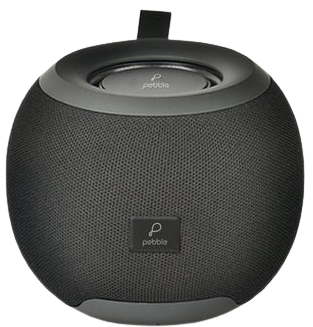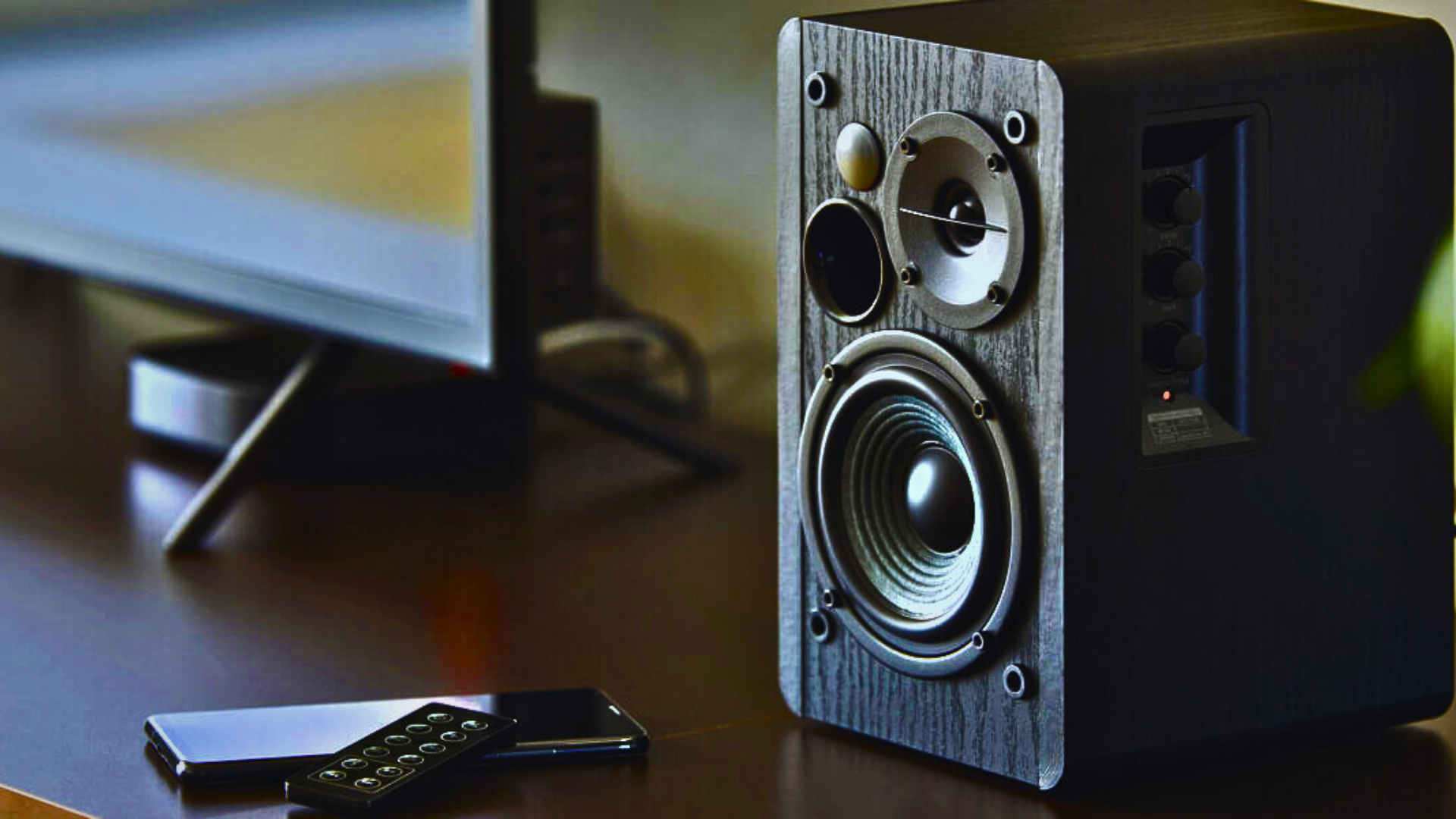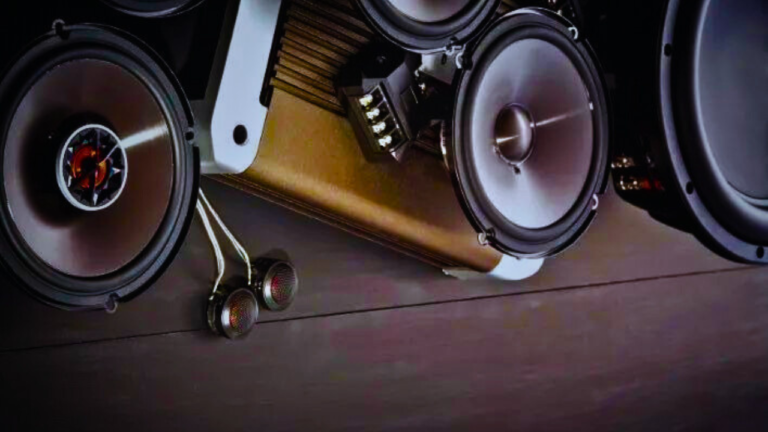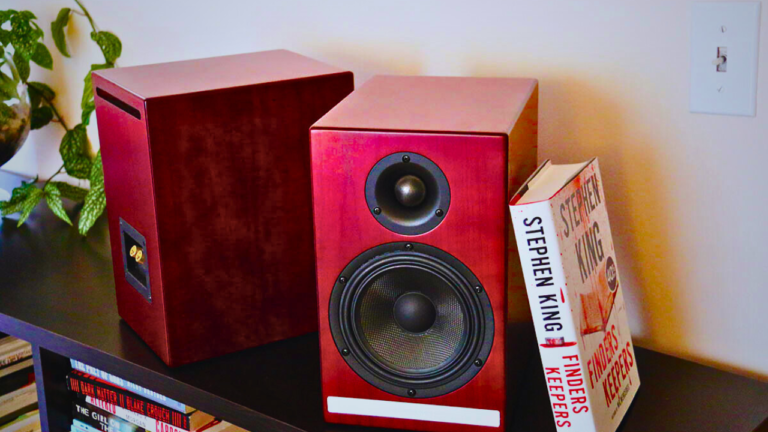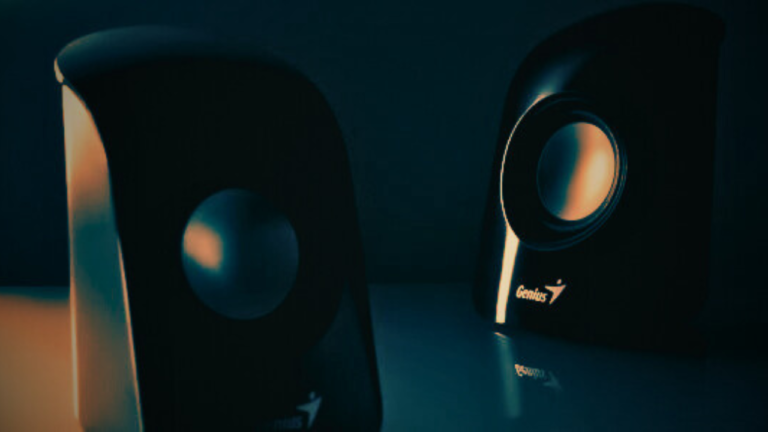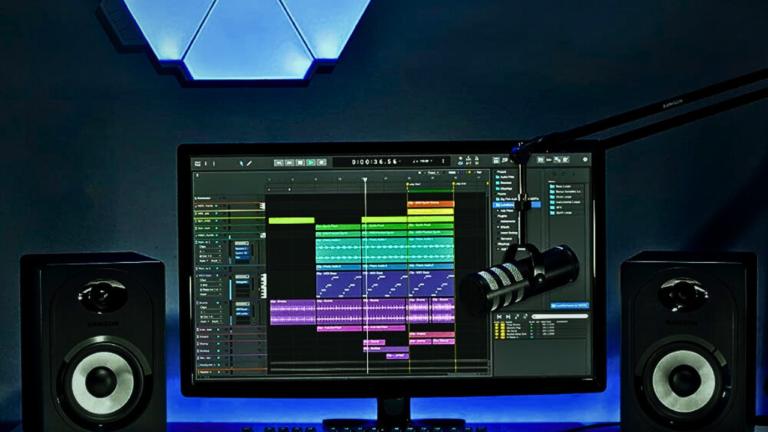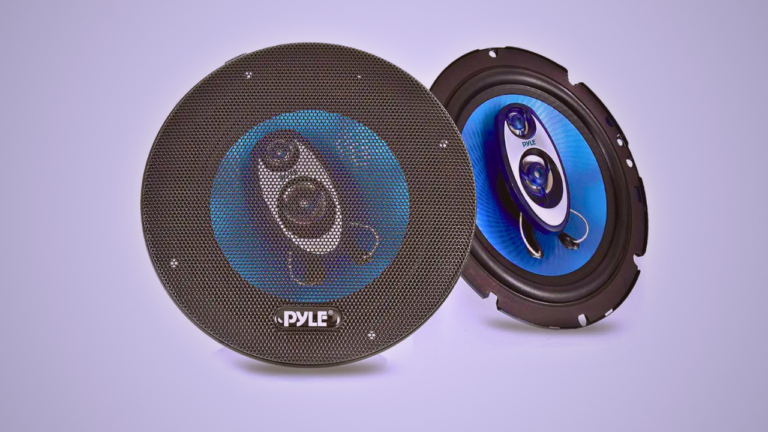What Is A Good Frequency Range For Speakers?
Speaker frequency range is a term that sounds technical, but once you learn about it, it becomes an essential part of your music setup. Let’s take a dive into this critical aspect of sound system setup and clarify what a good frequency range for speakers might be.
“Understanding speaker frequency range can make the difference between an average audio experience and a truly immersive sound.”
Whether you’re an audio enthusiast looking to maximize your music experience or someone who simply enjoys a good melody, understanding the intricacies of your sound setup can make a world of difference. For instance, the frequency range of your speakers plays a significant role.
- What is the speaker’s frequency range?
- Why does it matter?
- Which range should you aim for in your speakers for the best sound?
Stick around as we dissect these points one by one, aiming to enhance your understanding of speaker frequency range and how correctly tuning it can take your audio experience to a whole new level.
Read also: How To Mount Heavy Speakers On Wall?
What is the technical definition of frequency range in speakers?
When we talk about the frequency range of speakers, we’re referring to the scope of sound waves that a speaker can produce. Sound is measured in Hz,, and the human ear is capable of hearing frequencies between 20 Hz and 20,000 Hz. So, in the ideal scenario, speakers should be tailored to cover this entire spectrum.
Low Frequencies: Anything below 200 Hz falls into this category. These are the deep, rumbling sounds that you feel more than hear, like the thud of a bass drum or a bursting thunderclap.
Mid Frequencies: Ranging from 200 Hz to 2,000 Hz, this is the range where the bulk of audio content resides. Human speech, musical instruments like guitars and pianos, and ambient noise predominantly fall into this zone.
High Frequencies: Anything above 2,000 Hz forms the high-frequency range. The sounds in this spectrum are generally sharp and clear, like the crash of cymbals, a ringing phone, or a singing bird.
It’s important to note that not every speaker can cover this entire range. That’s where the concept of’speaker systems’ comes in, which is a combination of different speakers, each designed to handle a specific frequency range. For instance, a typical speaker system might consist of a woofer (for low frequencies), midrange drivers (for mid frequencies), and tweeters (for high frequencies).
So, to sum up, the frequency range of a speaker is a measure of the spectrum of sound frequencies it can generate, ideally covering the extent of human hearing capacity, between 20 Hz to 20,000 Hz.
How does the frequency range impact the sound quality of speakers?
Imagine a symphony orchestra in full flow—the deep and resonant sounds of bass and cello, the warm middle tones of viola and violin, and the crisp, high notes of flutes and piccolos. All these diverse instruments come together to create a rich tapestry of sound. Just like an orchestra, a speaker also needs to handle a wide array of tones or frequencies. So, let’s take a deep dive into the effect of the frequency range on sound quality.
The frequency range is critical in determining the depth, richness, and quality of sound a speaker can reproduce. In essence, the broader the frequency range, the better the speaker’s ability to replicate the full audio spectrum that human ears can perceive. Think of it as an auditory canvas; the larger it is, the more comprehensive, detailed, and delightful the sonic ‘picture’ it can paint.
- Low frequencies (20 Hz to 500 Hz): Responsible for the thump and punch in music, these frequencies encompass sound effects like thunder or an explosion in movies. Speakers with a good low-frequency response will reproduce bass notes that are deep, rich, and immersive.
- Mid frequencies (500 Hz to 2 kHz): This range primarily focuses on the human voice. When a speaker manages these frequencies well, you’ll hear the clarity in dialogues and vocals, making them sound more realistic.
- High frequencies (over 2 kHz): These frequencies take care of the minute details, the subtle nuances in the sound like the shimmer of cymbals, the crunch of gravel, or the rustle of leaves. A speaker proficient in high frequencies will offer a more vivid and elaborate portrayal of sounds.
A speaker’s frequency range doesn’t just affect the type of sounds it can make; it also influences the overall balance of your sound system. A speaker that is only excellent at low frequencies (bass) will overemphasize these sounds, making your music sound muddy and undefined.
On the other hand, a speaker that is only good at producing high frequencies can make your music sound harsh and thin. The perfect balance lies in a speaker with a wide frequency range that can reproduce lows, mids, and highs with equal proficiency.
Note: While having a wider frequency range is beneficial, speaker performance isn’t solely reliant on the frequency spectrum. Other factors like the speaker construction, room acoustics, and even the listener’s preference play a significant part in the overall sound experience.
What are the different types of speakers and their ideal frequency ranges?
Each type of speaker can be seen as an artist specializing in a particular sound spectrum. Some speakers are experts at creating high frequencies, while others concentrate on delivering deep and robust bass sounds. To make the most of your listening experience, it’s important to better understand the ideal frequency ranges for different types of speakers.
Subwoofers
A subwoofer is a specialized speaker designed to reproduce the lowest possible sound frequencies. When we’re talking about those punchy beats and rumbling movie effects we all love so much, you can be sure a subwoofer’s at work. The ideal frequency range for a top-performing subwoofer is usually 20 to 200 Hz.
Woofers
Next up, we have woofers. Woofers are designed to manage the range just above subwoofers, producing low- to mid-range frequencies. Because of this, they contribute significantly to the body of a piece of music. Look for woofers that handle frequencies between 40 and 1,000 Hz for the best performance.
Midrange Speakers
As their name suggests, midrange speakers are all about those middle frequencies. They reproduce the sounds that many instruments make, like guitars or violins, which lie in the mid-frequency band. A midrange speaker influences how natural, warm, and detailed your audio sounds are. Expect them to perform best between 500 and 2,000 Hz.
Tweeters
Last but not least, we have tweeters. Tweeters are designed to create high-frequency sounds. This is where the sparkling details of a song live—think cymbals crashing or glass shattering. A good tweeter should ideally cover the range from 2,000 to 20,000 Hz.
So, whether you’re assembling a wall-shaking home theater or just tuning your car stereo for the best possible sound, understanding speakers and their ideal frequency ranges can be a real game-changer for your auditory delight.
How can one determine the ideal frequency range for their speakers?
Discovering the ideal frequency range for your speakers isn’t solely about intricate technical knowledge; it’s also about tuning in to understand what sounds best to you. However, there are a few key steps that can guide you in the right direction.
Understand your speaker’s specifications
Start by examining your speaker’s manufacturer’s manual or product description. This will often detail the speaker’s frequency range, providing you with a good starting point.
Consider the speaker’s design
Different types of speakers are designed to operate optimally within specific frequency ranges. For example, subwoofers excel at low frequencies, while tweeters are designed for high-frequency sounds. If you have a full speaker system, ensure each part is handling the frequencies they’re designed for.
Experiment with different frequencies
Nothing beats personal experience. Fine-tune your speakers while listening to a variety of music genres at different volumes. This can give you a better understanding of how your speakers perform under various conditions.
Seek professional help
If you continue to struggle, consider seeking the expertise of a sound engineer or audio specialist. These experts have extensive knowledge of sound dynamics and can provide invaluable insight into your speakers’ capabilities.
Remember, everyone’s sound preference is personal and may depend on factors like room acoustics or the type of audio being played. Therefore, an ‘ideal’ frequency range is often subjective and dependent on individual factors. Trust your ears in the process—the ultimate goal is to get you happily lost in the music!
What are some expert recommendations for ideal speaker frequency ranges?
When it comes to the sweet spot of frequency ranges for speakers, expert opinions can vary. After all, achieving the perfect sound experience is a complex task that depends on many variables. However, there are some commonly accepted recommendations for the ideal frequency ranges, gleaned from audio experts and engineers around the world. Let’s delve into these:
- Full-range Speakers: In a full-range speaker setup, experts recommend a frequency range that covers the audible spectrum, roughly from 20 Hz to 20 kHz. This ensures your speakers can reproduce both the lowest and highest tones accurately, providing a comprehensive sound experience.
- Subwoofers: To adequately reproduce those deep and low bass tones, subwoofers should ideally operate within a frequency range of 20 to 200 Hz. Some high-performing subwoofers may go as low as 15 Hz.
- Woofers: For woofers, the recommended frequency range is commonly between 40 Hz and 1 kHz. Although they can’t reach the very lowest bass notes, woofers are excellent for most of the low-frequency range.
- Midrange Speakers: As the name suggests, midrange speakers handle the’middle’ frequencies. A range from 500 Hz to 4 kHz is often recommended by audio professionals for these speakers.
- Tweeters: Tweeters, responsible for handling the highest frequencies, should ideally function in the frequency range of 2 kHz to 30 kHz. While the upper limit exceeds the typical human hearing range, it helps in the reproduction of overtones and harmonics in music, adding to the detailing of the sound.
While these are general expert recommendations, it is important to reiterate that an ideal frequency range will depend on your specific use case and preference. This could encompass the type of music you most often listen to, the size and acoustic properties of your listening room, and your personal taste in sound reproduction.
Different genres of music, for instance, might demand different frequency ranges for optimal playback; a genre like classical may demand a full-range speaker set-up, while heavy metal or electronic dance music might be better served with more emphasis on lower frequencies.
Remember, the aim is to create a balanced and pleasurable audio experience. So, use these guidelines as a starting point, but don’t hesitate to tweak and experiment with the frequencies to achieve the sound output that best suits your listening preferences.
Conclusion
In conclusion, understanding the frequency range of your speakers can significantly improve your audio experience. It’s not as daunting as it may initially appear. You’re not just looking at numbers and specifications; you’re considering how they contribute to the richness and clarity of sound your system produces.
The perfect frequency range for your speakers largely depends on what you’re listening to and the capabilities of your speakers. Subwoofers, woofers, midrange speakers, and tweeters all have their own ideal frequency ranges, each contributing to the overall hearing experience.
The primary notion to keep in mind is that not all speakers are built the same, so read the specifications carefully to know exactly what you’re dealing with. Personal preferences also play a crucial part in determining the ideal frequency range; hence, take the time to experiment and find what sounds best to you. In cases where you’re unable to figure things out, don’t hesitate to lean on the expertise of professionals.
Remember, the aim is to achieve a balanced sound where you can relish all elements of your music, from the deepest basslines to the highest notes. Hopefully, this article has made the concept of frequency range in speakers clearer and more approachable for you. Go ahead and capitalize on this knowledge to enhance your audio setup.
Read also: How To Make Jeep Cherokee Speakers Louder?
FAQs
What is the human hearing range?
The human ear can typically detect sounds in the frequency range of 20 Hz–20 kHz, although this varies from person to person and also deteriorates with age.
How do I know if my speaker’s frequency range is good?
You can check the speaker’s specifications to find its frequency range. A wider range generally indicates a better ability to reproduce audio accurately. If the range covers 20 Hz to 20 kHz, the speaker should be able to handle most sounds that humans can hear.
Are higher frequencies better for speakers?
Not necessarily. Higher frequencies are not better or worse than lower ones; they’re just different. The ability to handle both high and low frequencies is what makes a speaker versatile and capable of delivering high-quality sound.
Why is frequency range important in speakers?
Frequencies are the pitch of the audio sound. A speaker that can reproduce a wide range of frequencies has a better chance of reproducing the audio as it was intended, providing a better listening experience.
Do all speakers have the same frequency range?
No. Different speaker types are designed to specialize in different frequency ranges. For example, subwoofers handle low frequencies, while tweeters handle high frequencies.
Can you adjust a speaker’s frequency range?
While you can’t physically adjust the frequencies a speaker is able to reproduce, you can use graphic equalizers to adjust the balance between various frequency ranges in outputted audio.
What affects a speaker’s frequency range?
The design and material of the speaker, including the size, shape, and enclosure type, all play a role in determining its frequency range.
What’s the difference between a woofer and a subwoofer?
Woofers and subwoofers are both speakers designed to handle low frequencies. However, subwoofers specialize in producing the lowest end of the spectrum, typically below 80 Hz.
Is a lower or higher frequency better for bass?
Lower frequencies generally produce deeper and rumbling bass, while higher bass frequencies provide a punchy and tight sound.
What’s the best frequency setting for a home theater system?
For a balanced sound in a home theater system, it could be ideal to set the bass/subwoofer to around 60-80Hz, the midrange speakers at 500Hz to 2kHz, and the tweeters at around 3kHz to 20kHz. Also, the correct placement of speakers plays an essential role in getting the most out of your home theatre system. However, these are just general guidelines, and individual preferences may vary.

Hey there! I’m Henry Jack, the voice behind speakerrealm.com, your ultimate destination for everything speakers. Whether you’re a seasoned audio enthusiast or just starting to explore the world of sound, you’ve come to the right place.
At Speaker Realm, I dive deep into the realm of speakers, bringing you comprehensive reviews, insightful guides, and the latest trends in the industry. From floor-standing behemoths to compact bookshelf wonders, I cover it all.
I’m passionate about helping you find the perfect speakers to elevate your audio experience. Whether you’re setting up a home theater, upgrading your sound system, or just looking for some quality audio gear, I’ve got you covered.
But Speaker Realm isn’t just about technical specs and performance metrics—it’s also about the art and science of sound. I explore topics like acoustic design, speaker technology, and the impact of audio on our lives.
So whether you’re a casual listener or a hardcore audiophile, join me on this journey through the world of speakers. Let’s turn up the volume and explore the endless possibilities of sound together at speakerrealm.com!
